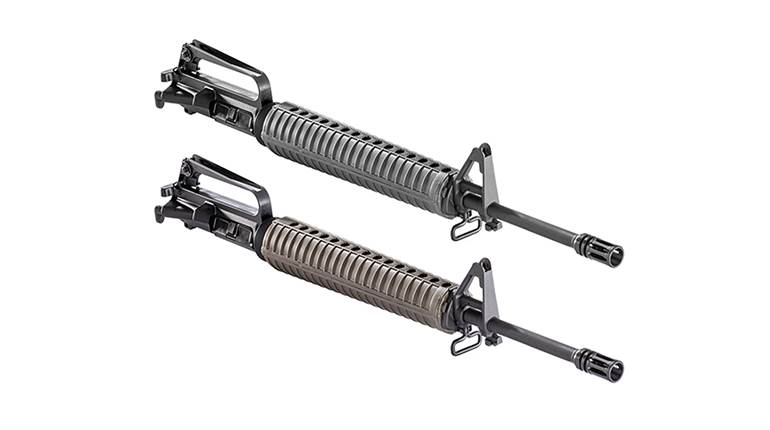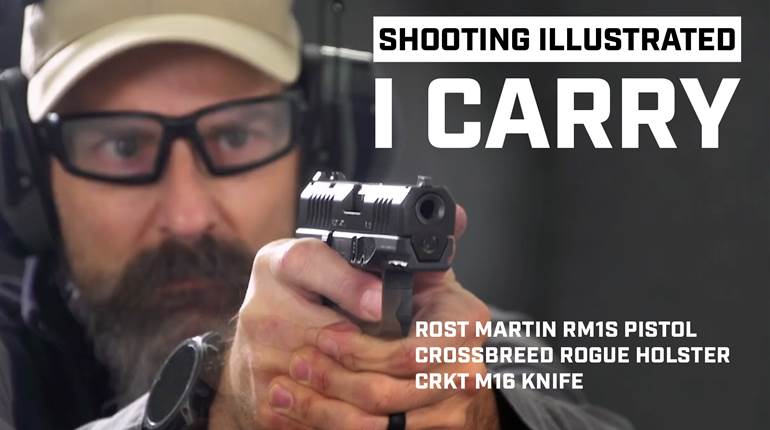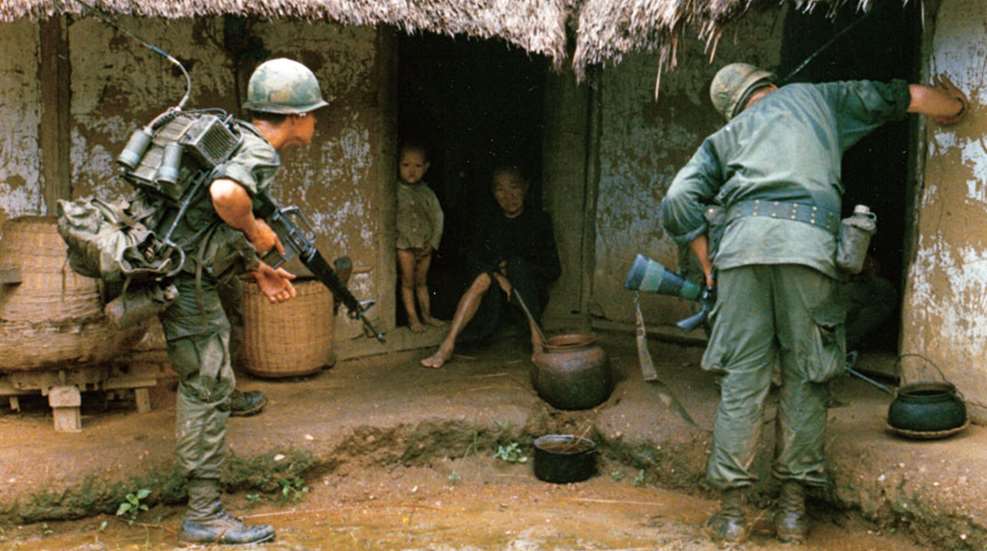
This article was first published in the July 2012 issue of American Rifleman.
Soldiers of the 1st Cavalry Division (Airmobile) search a hut in Binh Dinh Province, Republic of Vietnam in October 1966 during Operation Thayer. The soldier at left is armed with an XM16E1 rifle.
The door gunners began to fire bursts with their M60 machine guns as the helicopters dropped into the clearing. To the left of the flight, a mountain known as the Chu Pong Massif rose 1,500 ft. above the valley floor. At its base, a dry creek bed and dense jungle bordered a clearing code-named landing zone X-Ray. The force conducting the combat assault was the 1st Battalion, 7th Cavalry Regiment under the command of 42-year-old Lt. Col. Harold “Hal” Moore. As the Huey’s skids touched the LZ, Lt. Col. Moore yelled “Let’s go!” to his men and took-off running for the edge of the clearing, firing his rifle as he ran. It was Nov. 14, 1965, and it was the beginning of one of the most dramatic engagements of the war in Vietnam—the Battle of Ia Drang Valley.
North Vietnamese soldiers and Viet Cong guerillas fought the battle armed with either the SKS or the AK-47. The Americans were armed with the XM16E1—a revolutionary new select-fire rifle often referred to simply as the “Black Rifle.” In his After Action Report for the battle of LZ X-Ray, Lt. Col. Moore had nothing but praise for the rifle he and his men carried into the Ia Drang Valley: “Brave soldiers and the M16 brought this victory.” He even referred to it as “the best individual infantry weapon ever made, clearly the answer to the enemy’s AK-47.” It was an auspicious beginning for a rifle that differed so significantly from the ones that came before it. First of all, it was lightweight mainly because of the use of aircraft-grade aluminum and plastic in its construction. Secondly, whereas previous generations of infantry rifles fired the powerful .30-’06 Sprg. or 7.62x51 mm NATO cartridges, the XM16E1 was chambered in .223 Rem.—a small-caliber, high-velocity cartridge that was thought to be better suited for modern, close-range combat environments. The 55-gr., .22-cal. bullets reached a muzzle velocity of 3250 f.p.s. and tended to tumble after striking a target. In fact, an early promotional pamphlet for the rifle stated, “on impact the tumbling action of the .223 caliber ammunition increases effectiveness.” This “effectiveness” had actually been demonstrated in Vietnam long before the 7th Cavalry got there.
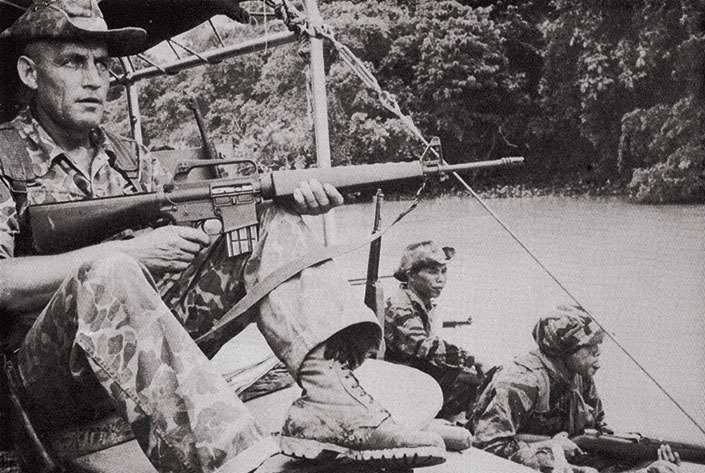
In 1958, the ArmaLite Division of Fairchild Aircraft Corp. introduced the first prototype of its .22-cal. select-fire center-fire rifle called the AR-15 Model 01 (the “AR” stood for ArmaLite Rifle). Weighing barely more than 7 lbs. with a loaded 20-round magazine and easily controllable in fully automatic, the AR-15 seemed like the perfect arm for the small-statured soldiers of the Army of the Republic of Vietnam (ARVN) who were fighting-off a growing communist insurgency. That being the case, a full-scale test of the AR-15 was conducted during the first half of 1962 using 1,000 new Model 01 rifles. They were distributed among several ARVN units and American advisors and carried into the field to be used against the Viet Cong. The comments that came back from the American advisors were “extremely favorable” of the AR-15 and the lethality of the .223 cartridge. One report related an encounter between ARVN Rangers and three Viet Cong in heavy jungle on June 16, 1962. One of the rangers fired a burst from his AR-15 at one of the VC, hitting him with three rounds at a range of only 15 meters: “one round in the head took it completely off - another in the right arm, took it completely off, too - one round hit him in the right side, causing a hole about five inches in diameter.”
Although lurid, such accounts of the unforgiving effectiveness of the AR-15 and the .223 cartridge exerted convincing influence on the American military. Soon after the tests in South Vietnam, the U.S. Air Force officially adopted the rifle followed by the U.S. Navy, which ordered a small number of rifles to arm its SEAL teams. But the remarkable lethality of the high-velocity .22-cal. bullet was about to change. The Model 01 AR-15s that were used for the test had 20" barrels with rifling that made one complete twist in 14" (1:14"). That rate provided adequate accuracy but imparted the marginal gyroscopic stability on the bullet that permitted tumbling on impact. Continued testing by the U.S. Air Force determined that, because of the 1:14" rifling, the AR-15 Model 01 did not group as well in dense arctic air. The AR-15’s rifling was therefore changed to one twist in 12", which imparted greater stability to the bullet but may have resulted in a reduction in its lethality.
Despite being described as “the best individual infantry weapon ever made” in 1965, the XM16E1 began to exhibit catastrophic problems in 1966. Reports from the field indicated that U.S. troops in Vietnam were experiencing chronic failures to extract. In the malfunctions, a cartridge’s brass case would seize fast in the chamber and the extractor would tear through the rim. Such a stoppage could only be cleared by pounding the case out of the chamber from the muzzle end using a cleaning rod—something that was terribly impractical and dangerous to do in the middle of a firefight. This situation was exacerbated by the fact that XM16E1s were not issued with cleaning rods at this stage in production. In fact, they even lacked compartments for cleaning kits in the buttstocks. When a cleaning rod could even be scrounged at all, troops resorted to taping them to the forward handguards of their rifles. Through the end of 1966 and into 1967 these malfunctions reached chronic levels and resulted in lives lost on the battlefield. After one especially violent battle, a Marine wrote home to his mother saying “Before we left Okinawa, we were all issued this new rifle, the M16 … practically every one of our dead was found with his rifle torn down next to him where he had been trying to fix it.”
On Feb. 28, 1967, the XM16E1 was standardized as the M16A1 rifle at the height of the jamming epidemic when troop confidence in the rifle had reached an all-time low. Amid widespread rumors, word of the problems endemic to the M16A1 soon reached U.S. Congressional leaders. In May, the House Armed Services Committee of the 90th Congress established the Special Subcommittee on the M16 Rifle with Representative Richard Ichord (D-Mo.) as chairman. The three-member “Ichord Committee” immediately went to work during the summer of 1967 investigating the causes of the malfunctions. Although the military attempted to blame the malfunctions on improper cleaning and maintenance, the committee quickly determined that the root cause was ammunition—specifically, gunpowder. When the .223 M193 cartridge was first adopted by the military in September 1963, only DuPont’s IMR 4475 nitrocellulose gunpowder was approved for loading it. As a result of a series of technical challenges that manufacturing the new round presented, a fateful decision was made on April 28, 1964, to allow M193 ammunition to be loaded with Olin Mathieson’s WC 846 ball powder. A double-base nitrocellulose/nitroglycerine propellant, the ball powder exerted higher chamber and gas port pressures and also left behind carbon fouling. The higher gas port pressure resulted in increased cyclic rate—a problem initially resolved after the introduction of a modified recoil buffer. But high port pressure, high chamber pressure and carbon corrosion were ultimately to blame for the outbreak of XM16E1 extraction failures in Vietnam.
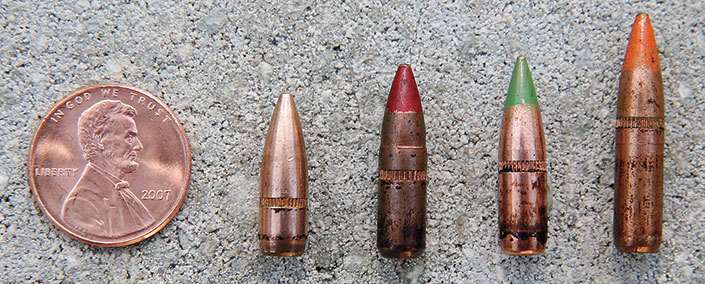
When the Ichord Committee submitted its 51-page final report in October, it recommended the withdrawal of Olin Mathieson’s WC 846 ball powder and the immediate introduction of chrome chambers on all production rifles. Thus, at about the same time as the Tet Offensive in early 1968, the often-tragic field malfunctions experienced with the XM16E1 began to fade away. Soon thereafter, production at Colt’s was supplemented when contracts to produce the M16A1 were awarded to the Hydramatic Division of General Motors in Ypsilanti, Mich., and Harrington & Richardson, Inc. of Worcester, Mass. Completed rifles from these three manufacturers armed U.S. units during the Nixon years of the war in Vietnam. From the violent battles in the A Shau Valley in 1969 to the incursion into Cambodia during the summer of 1970, the rifle proved itself a highly effective infantry weapon. Even after the withdrawal of front line U.S. forces began in 1971, the M16 remained in Vietnam until the bitter end: XM16E1s and M16A1s armed U.S. personnel during the evacuation of the U.S. embassy in Saigon on April 30, 1975.
After Vietnam, the M16A1 continued to serve as the U.S. military’s service rifle through the early 1980s during years that were often turbulent. When the 24th Marine Amphibious Unit joined the peacekeeping mission in Beirut, Lebanon, in late 1982, the M16A1 was there. When a force of nearly 10,000 U.S. soldiers, sailors, airmen and Marines participated in the Operation Urgent Fury invasion of Grenada in late 1983, the M16A1 was there again. At that point, the M16 was about to undergo yet another change. Three years earlier, NATO member nations had ratified Standardization Agreement 4172 (or “STANAG 4172”), which formally adopted the 5.56x45 mm cartridge as the chambering for all NATO rifles. Although the new cartridge carried similarities over from the .223 Rem./M193 round, it utilized a heavier 62-gr. bullet with a steel core to give the load greater penetration. Designed by Belgium’s Fabrique Nationale as the SS109, it was the cartridge standardized as 5.56x45 mm NATO or the M855 to the U.S. military.
In November 1983, the U.S. Marine Corps adopted a product-improved version of the M16A1 chambered for the 5.56x45 mm NATO round. The new rifle was called the M16A2 and it differed significantly from its predecessor: improved rear sights, a brass deflector, a heavier barrel and 1:9" rifling were among the changes. The M16A2 also replaced the M16A1’s “AUTO” selector setting with a “BURST” setting delivering three rounds with every trigger pull. The Army followed the Marine Corps’ adoption of the improved rifle in March 1986 when it ordered 100,176 M16A2 rifles from Colt. In September 1988, the U.S. government placed an initial order for 266,961 M16A2s with Fabrique Nationale’s North American subsidiary, FN Mfg., Inc. of Columbia, S.C. Late the following year, when 57,000 U.S. military personnel conducted the Operation Just Cause invasion of Panama, the M16A2 was used in combat for the first time.
The A2 saw even more service soon thereafter when the U.S. military sent more than a half-million personnel to the Persian Gulf in August 1990 in response to the Iraqi invasion of Kuwait. Following the decisive victory of Operation Desert Storm in 1991, the M16A2 was next used in combat when U.S. Army Rangers and soldiers from the 10th Mountain Division fought a vicious urban battle in the streets of Mogadishu, Somalia in October 1993.
With the 38.8" overall length of the M16A1 and the 39.5" overall length of the M16A2, the need for shorter and lighter versions has always been a part of the story. In late 1966, Colt introduced a version of the select-fire M16A1 with a 10" barrel, a two-position collapsible stock and a 4.5" flash/noise moderator called the XM177E1 Commando (designated GAU-5/A by the Air Force). The following year, Colt introduced a slightly modified version with a longer 11.5" barrel designated the XM177E2. These versions of the Commando served Army Special Operations units, Navy SEAL teams and Air Force security forces throughout the 1960s, ’70s and into the ’80s. As the transition to a product-improved rifle was taking place, Colt began developing an M16A2-based carbine in 1984. This new carbine, designated XM4, combined the compactness of the Commando series carbines with the ability to fire the new 5.56x45 mm NATO cartridge. It featured the “BURST” setting and the brass deflector of the M16A2, and was equipped with a 14.5", 1:7" twist barrel. This barrel also included a bayonet lug—a feature missing from the Commando series—and a visible notch in the barrel forward of the front sight base to accommodate the mounting band for the M203 grenade launcher.
Although at first equipped with the signature M16 carrying handle, the XM4 was ultimately produced with a removable carry handle and a flat-top upper receiver for mounting optical sights. In September 1994, the Army standardized it as the M4 Carbine and began distributing it to combat units. Not long thereafter, Colt began to produce M4 carbines equipped with the Knight’s Armament Rail Accessory System in place of the standard forward handguards. This M4 Modular Weapons System remains in service today and accommodates the mounting of a variety of accessories, including grips, lasers and tactical lights.
When U.S. soldiers and Marines deployed to Kosovo in 1999 as part of the KFOR peacekeeping force, many of them were armed with the M4 Carbine. When the American military responded to the Sept. 11, 2001, terrorist attacks, the M4 Carbine was there and ready to fight. It saw extensive service in Afghanistan notably during Operation Anaconda in March 2002. In 2003 the M4, alongside plenty of M16A2s, armed American personnel when they returned to the deserts of Iraq. In fact, both M4s and A2s were present when soldiers of the 4th Infantry Division captured Iraqi dictator Saddam Hussein near Tikrit on Dec. 13, 2003. Following the initial success of Operation Iraqi Freedom, American forces began to combat the escalating sectarian violence of the Iraqi insurgency. During that phase of the war, yet another version of the rifle began to appear on the battlefront. The flat-top M4 Carbine proved to be so successful that a new a full length rifle with the same features was soon adopted as the M16A4 Modular Weapons System (manufactured by Colt and FN). Together with the M16A2 and the M4 Carbine, the M16A4 has been equipping the American military during the recent years of the Global War on Terror.
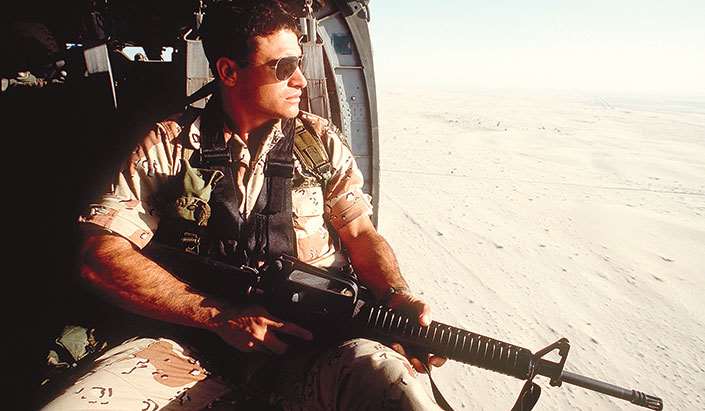
For 50 years the Black Rifle in its various forms has armed the American military. Today it is the rifle that is fighting the global war against terrorism, and a whole new generation of Americans has had the experience of enduring combat and facing an enemy of the United States with an M16. From the mountains of Afghanistan to the deserts of Iraq, these rifles have often been the difference between life and death for thousands of U.S. service personnel. On Sunday, March 20, 2005, 23-year old Sgt. Leigh Ann Hester of the 617th Military Police Company, Kentucky National Guard, was part of a security team for a large supply convoy south of Baghdad. When the convoy neared the town of Salman Pak, a force of approximately 50 insurgents ambushed it. Sergeant Hester and the other members of her squad immediately engaged the enemy in a fierce 25-minute firefight at close range. Armed with an M4 Carbine equipped with an M203 40 mm grenade launcher, Sgt. Hester rushed forward under fire from her vehicle to a nearby ditch. Together with her squad leader, Sgt. Hester fought her way down the length of the ditch firing her M4 Carbine at the enemy. The combat was so intense that she quickly ran out of ammunition and was forced to expose herself to the enemy’s fire again as she ran back to one of the vehicles to retrieve more. She then returned to the ditch and continued fighting until there was no opposition left. During the firefight, Sgt. Hester personally killed three insurgents with her M4 and was subsequently decorated for her actions. In addition to all of the other noteworthy points associated with the military history of the M16, it is also the arm used by the first American woman to earn the Silver Star for direct action with the enemy.
The M16 earned perhaps its greatest distinction on May 2, 2011, when a variation of the M4 Carbine was used to kill the infamous terrorist leader and September 11 mastermind Osama Bin Laden during a daring raid on his compound in Abbottabad, Pakistan.
The M16 has given 50 years of service to the American military. Although its reputation suffered during those dark days in 1966 and 1967, it has nevertheless served longer than any other rifle in U.S. military history. Soldiers, sailors, airmen, Marines and Coast Guardsmen stand watch right now, protecting the republic with this outstanding and effective firearm.













